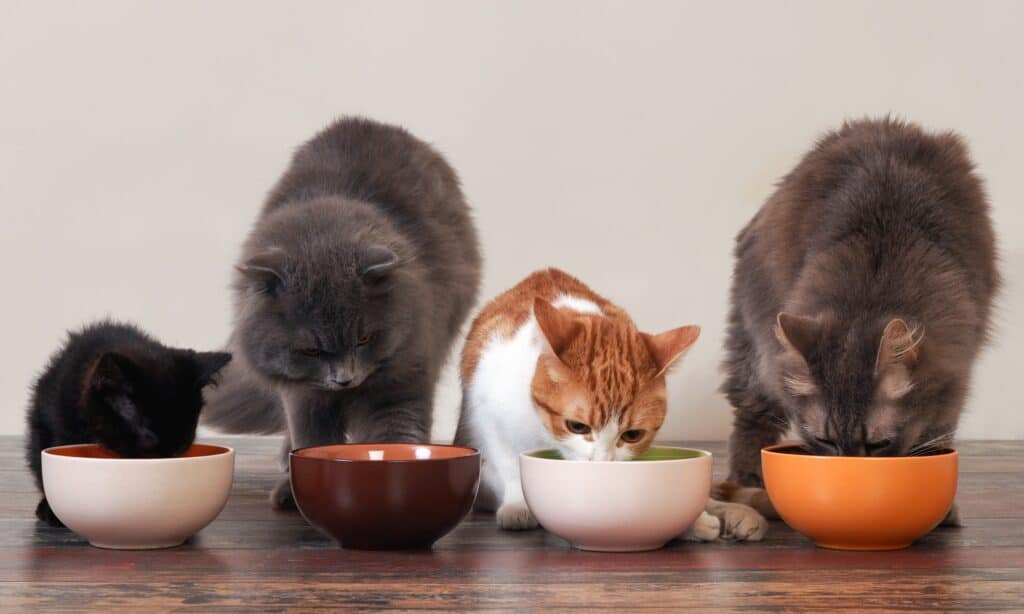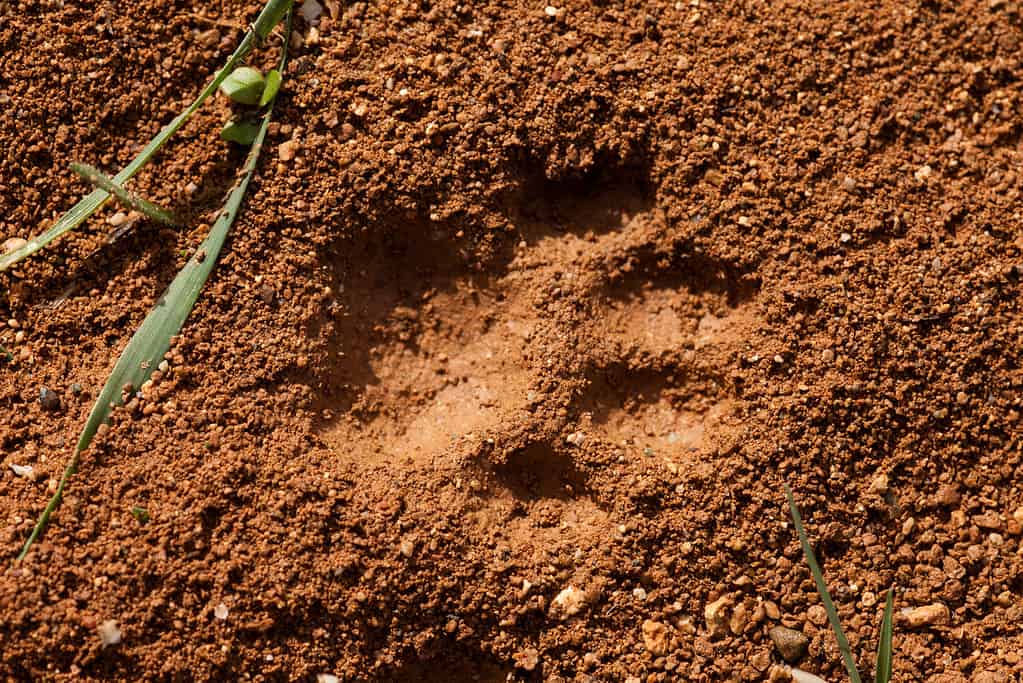If you see some animal tracks on a trail or in your yard it may be helpful to identify them. Knowing what critters are in your space can be beneficial to your safety, the protection of your garden, or the prevention of pests. If rats have invaded your crawl space or if squirrels are stealing from your birdfeeder, their tracks may give them away. Some animal tracks, however, may come from animals you want to have around- like your pet cat! This article will tell you everything you need to know to identify cat tracks and distinguish them from other prints you may find.

This illustration provides a basic outline of different mammal tracks.
©Yevgenij_D/Shutterstock.com
Animal Overview
Description

Domestic cats come in many different breeds that can vary greatly in size and color.
©iStock.com/kozorog
The pet cat, Felis catus, is a small member of the family Felidae. Average household cats weigh between 9 and 11 pounds and measure 18 inches long without their tails. Males are typically larger than females, but weight varies greatly based on diet and exercise. The Cat Fanciers Association recognizes 42 different breeds of cats and other authorities recognize up to 70 different breeds. These different cats vary based on size, fur length, fur color, coat pattern, body and head shape, and other characteristics. Typical fur colors include white, gray, black, various shades of brown, cream, orange, and more. Cats may be a solid color or may have a multicolor pattern.
Distribution

Aoshima Island in Japan is home to more than 200 cats, earning it the nickname Cat Island.
©iStock.com/ES3N
The domestic cat is the second most popular pet in the United States after the domestic dog. According to the 2023 United States Census, 66% of U.S. households have a pet. These households include 46.5 million that have pet cats. Outside of the United States, pet cats are very popular in a number of countries. Cats are most popular in Russia and France. In Russia, 57% of people have a cat, and in France, 41% of people have a cat. The most cat-dense city in the world including both pets and strays is Istanbul. Interestingly, Aoshima Island in Japan only has 15 to 20 human residents but is home to more than 200 cats, earning it the nickname Cat Island.
Cat Tracks
Paw Morphology
Cats have two front paws with five toes each and two back paws with four toes each. In their tracks, only four toes will be visible for all their paws. The fifth toes on their fore paws are positioned higher on their leg. Cats have retractile claws that do not appear in their tracks, unlike dogs. The impressions from cats’ toepads are asymmetrically arranged around palm pads that have 3 lobes. The front paws are approximately 1 ½ inches long by 1 3/8 inches wide and the back paws are slightly smaller at approximately 1 3/8 inches by 1 3/8 inches.
Snow

The cat prints in this shallow snow clearly show their four toepads and palm pad.
©Cyril Hou/Shutterstock.com
Domestic cats live in many areas that receive snowfall and will leave visible tracks in the right conditions. If the snow is too deep, many of the distinguishing details may be obscured. In this situation taking note of the general dimensions of the track will help differentiate a cat trail from that of larger cats like the Canada lynx. If the snow is packed or if it is a thin frost layer, the three lobes of the palm pad and the four toepads may be identifiable. Small dogs may produce similar size tracks, but they will include claw marks and will not have a three-lobed palm pad.
Mud

A muddy cat print with four distinct toe impressions.
©Pi-Lens/Shutterstock.com
Mud is the easiest terrain to identify clear tracks in. If the mud is not too saturated, it will likely exhibit prints with all the necessary features for identification. First note the length and width of the prints, then examine the palm impression’s shape. Determine how many toepads there are, if the number differs between forepaws and hind paws, and if they include claw marks. If the tracks have four toes with no claws and a palm pad with three lobes, they are likely from a cat. If the tracks you find are walking in a relatively straight line, you could also assess the gait. Some small mammals leap and leave tracks where the front paws are always adjacent, and the back paws are always adjacent. A cat will produce tracks with a different pattern because the limbs on each side of the body move together.
The photo featured at the top of this post is © OlegD/Shutterstock.com
Thank you for reading! Have some feedback for us? Contact the AZ Animals editorial team.







